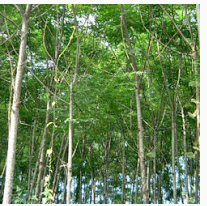SPOILER ALERT!
What is a natural wood?

When a woodworker makes the decision to work with woods, they may first have to learn about the different kinds of wood that are readily available. They will first need to understand about the 3 major categories of timber: South American, Brazilian and Asian. The reason these types of wood are considered to be the most frequent in the world is these three regions are among the largest concerning timber production. In addition, the most wood coming out of the area is exported, which will generally demand more transportation costs for international buyers.
Another step to learn about natural wood kinds is to find out about the various veneers and laminate finishes on offer. A veneer is a type of synthetic compound that's bonded to real wood. It can help to make a product look like timber, although there are some disadvantages to using this type of finish. Laminate finishes may also result in problems for a project when applied to painted walls or unfinished timbers. If you're looking to make a finished look to an area without completely replacing the timber, then laminate or veneer are most likely the best options for you.
Freshwater species of wood also have similarities with American species of timber, particularly cedar. You will find differences between American and Brazilian species, but such as the latter becoming more challenging to operate with. For instance, Brazilian species of timber are more challenging to use and cause additional damage to things which are left to dry out with time.
One method to compare these types of wood would be to understand what each has in common. All wood may be used to make items such as furniture, but just a handful of types are usually considered to be attractive and aesthetically pleasing. A few examples of types of wood considered appealing are cedar, teak, mahogany and walnut.
There are a large number of product makers that are growing increasingly interested in producing imported wood due to their increased demand. This means that the costs of imported kinds of wood is comparatively lower compared to the expenses related to domestic wood. And because many are limited in supply, this makes it much easier for businesses to get their goods to market.
For more details make sure you visit gỗ tự nhiên (natural wood).
